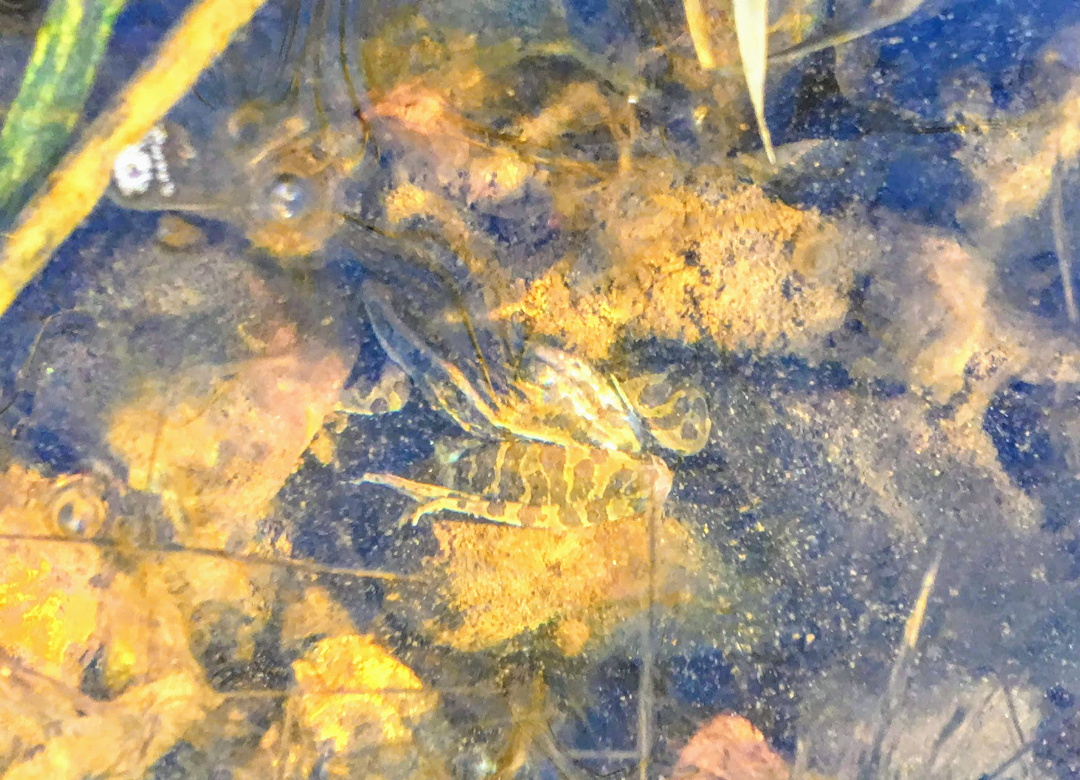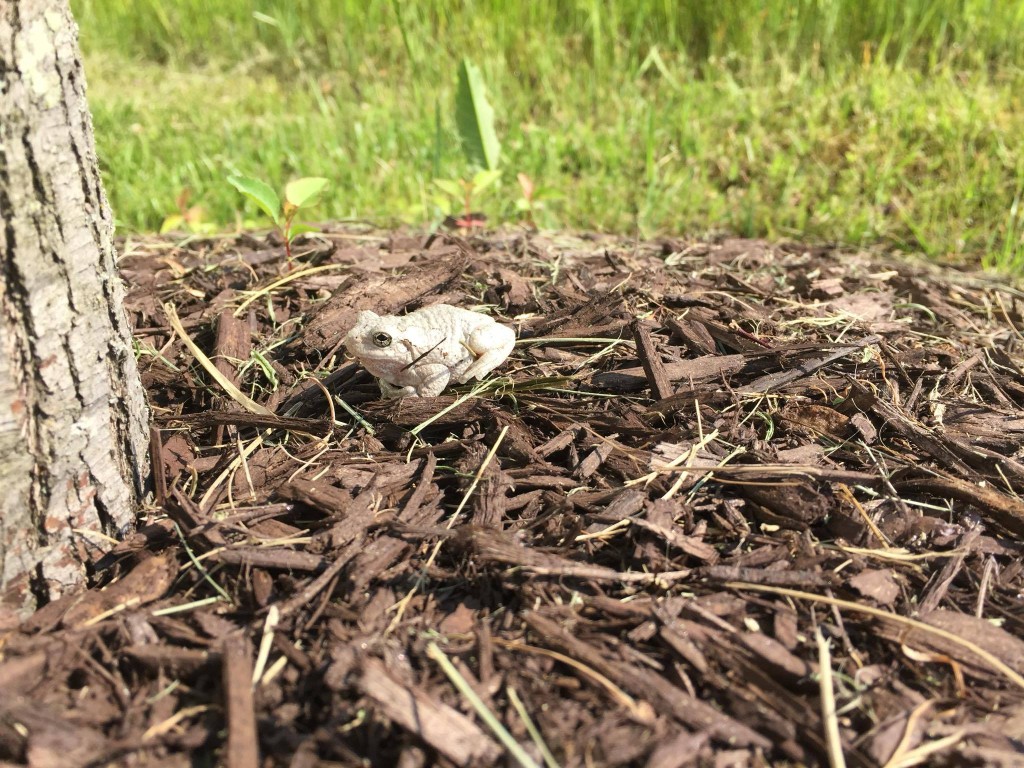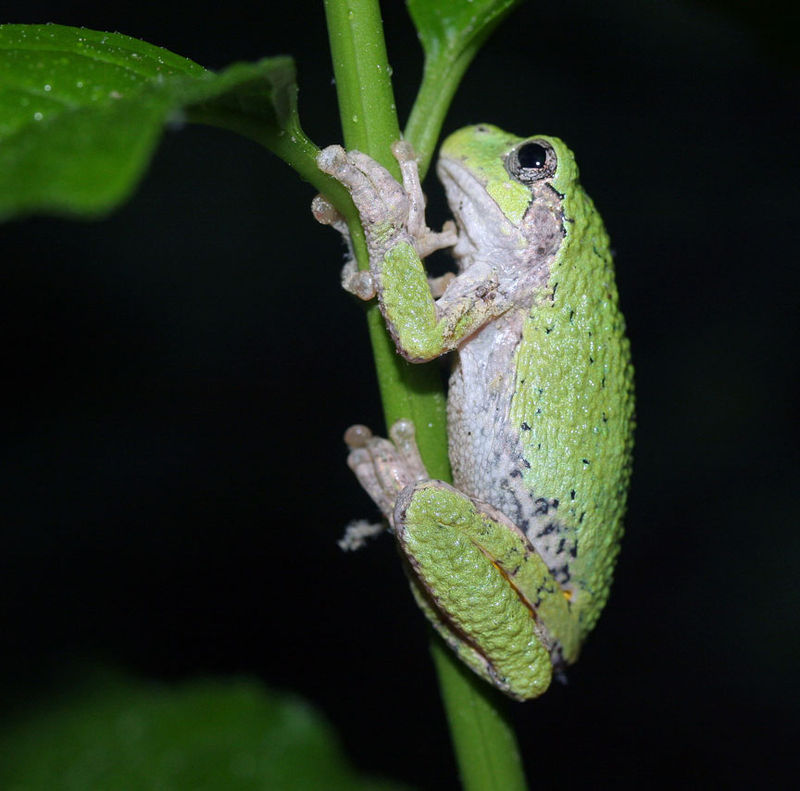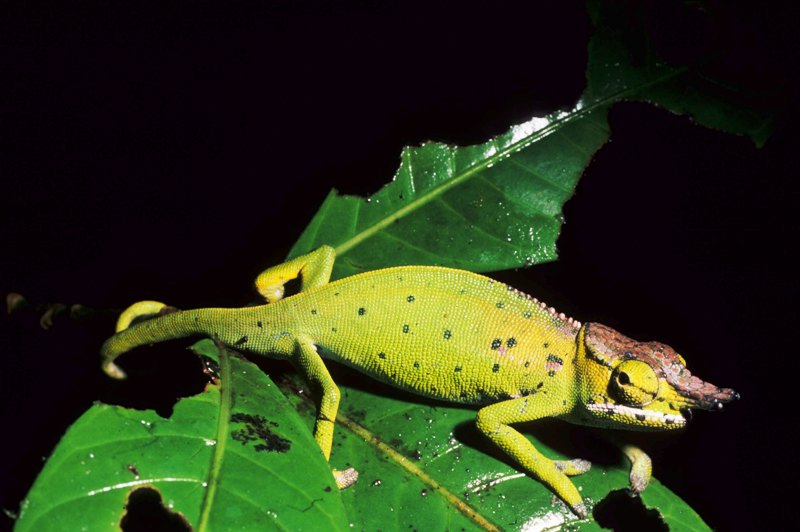There is one fact that must be featured first:
One third of all amphibians are threatened with extinction.
(It is because of this fact that we will continue to reach people through education and engagement every day. Be kind and share with others.)
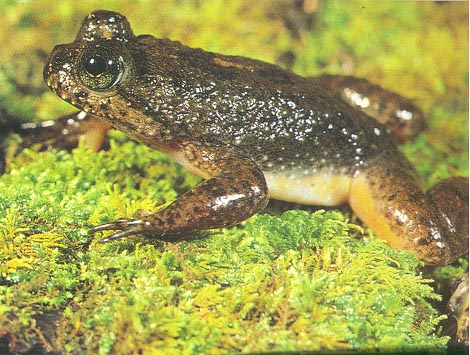
Southern Gastric-brooding Frog (Rheobatrachus silus). Photo by: unknown author. Wikipedia.
Frogs have been on the Earth for over 200 million years, at least as long as the dinosaurs.
Toads are frogs, but frogs are not toads. Frogs live near ponds, swamps and marshes. Frogs can live on the ground or in trees, but toads live only on the ground. Some frogs live in deserts and only come to the surface during the rainy season and breed in shallow vernal pools and puddles that dry quickly.
Frogs usually have webbed hind feet, and some have webbed front feet. Some frogs, such as tree frogs, have pads on their toes that help frogs climb trees, or even stick to a glass window.
The largest frog is the African Goliath Frog. One of the smallest is smaller than a dime, the Paedophryne amauensis, which was recently discovered on the island of Papua New Guinea.
There are over 6,000 species of frogs worldwide. They exist on all continents except Antarctica.
Some frogs are poisonous and one drop from this type (such as a Dart frog) could kill a human. You’ll notice these frogs by their bright colors.
Frogs have big, bulging eyes, excellent night vision and can see almost 360 degrees around. They do not have the ability to turn their heads. They also use their eyes to help them swallow food by pushing their eyes down.
Frogs are cold-blooded, meaning their body temperatures change with the temperature of their surroundings. When it gets cold, some frogs dig burrows underground or in the mud at the bottom of ponds and hibernate until spring. Hibernation has a summer equivalent called “aestivation.”
Many frogs have incredible camouflage techniques: muddy brown in color or spotty bumpy skin to make them look like moss, leaves, and even trees.
Male frogs call to attract the females. Some frogs have vocal sacs, some do not—pouches of skin that fill with air like balloons. The balloon acts as an amplifier and some frog sounds can be heard from a mile away.
During mating season, the male frogs in a group will croak quite loudly to attract females. When a female finds a male croak she likes, the male will grab her and she will release eggs for him to fertilize.
Frogs will eat any living thing that will fit in its mouth. This includes bugs, spiders, worms, slugs, larvae and even small fish.
To catch prey, the frog’s sticky tongue darts out and pulls the prey into its mouth. A frog’s tongue can snap back into its mouth within 15/100ths of a second.
Some species of tadpoles will swim together in schools like fish for protection from predators and for heat regulation during cold late winter and spring weather.
Frogs can hear both in the air and below water. Instead of the external ear like we have, their external ear is called the “tympanum.” The eardrums are covered by a layer of skin and are the circular area just behind the eyes.
The bromeliad tree frog (Bromeliohyla bromeliacia) is found in Belize, Guatemala, Honduras and southern Mexico. These frogs lay their eggs inside bromeliads or other water-filled spaces in the canopy of trees so the tadpoles can develop. They live their lives in the canopy.
There are approximately 300 species of frogs in Madagascar. There are no toads, salamanders or newts.
The flying frog has brilliant colors, long limbs and its fingers and toes are webbed, giving it the ability to glide or parachute to the forest floor from high in the trees (like flying!)
Frogs have eyes with an upper and lower lid and a membrane which provides extra protection while swimming. Depending on the frog, their irises can range in color and the pupils from horizontal or vertical to triangular and circular.
Some frogs that live in colder regions can survive being frozen. Their essential organs are protected by a high concentration of glucose. Once spring arrives and the temperature warms, the frog’s heart starts beating, and the frog thaws out and hops off.
Male frogs call for females and there are certain types of female frogs that reply. Each frog species has a different sound, some high and some low. Frogs also have different calls for an unreceptive female, an approaching rain storm, or in the case of danger.
One third to possibly one half of all amphibians are threatened with extinction. In response, the global conservation community has formulated the “Amphibian Conservation Action Plan.” Select species that would otherwise go extinct will be maintained in captivity until such time as they can be released back in the wild.
Frogs have weak teeth so they do not chew their food. Instead they are used to hold the food before it is swallowed. They catch flies or other moving prey by extending their coiled tongue. Some frogs do not have a tongue, and just stuff food in their mouths with their hands.
Most frogs start out as eggs and soon emerge as tadpoles. At the end of the tadpole stage, the frog undergoes an amazing metamorphosis. The frog develops lungs and their gills disappear. Their legs begin to grow as the tail recedes. The nervous system adapts for hearing and stereoscopic vision. It’s during this transformation that frogs are most vulnerable because of their lack of motion. ** However, some frogs skip the tadpole stage! Eleutherodactylis planistris, the greenhouse frog, for example, lay their eggs on land, the eggs then hatch out fully developed young frogs.
The gastric-brooding frogs, or platypus frogs (now extinct in the wild), were native to Queensland in eastern Australia. These frogs were unique because they were one of two known species that incubated the prejuvenile stages of their offspring in the stomach of the mother.
Animals that eat frogs include snakes, lizards, birds, shrews, raccoons, foxes, otters, weasels and larger frogs. Underwater frogs must watch out for fish, turtles and water birds. In addition, in many places around the world, there are humans who eat frogs.
Some species of frogs are capable of changing their skin color as their environment changes. Frogs have a huge range of skin colors and patterns, which indeed help protect them from their natural predators. Colors can also aid as a warning to predators that the frog may be toxic.
The glass frog’s general background coloration is primarily lime green but the abdominal skin of some is translucent so we can see the heart, liver and gastrointestinal tract through the skin.
Some tadpoles are herbivorous, feeding on algae and plants, some are omnivorous and some are even cannibals. Adult frogs eat their fair share of mosquitos, which keeps them away from us and our overall environment healthier.
Frogs have graced the pages of literature in such works as, Frog and Toad by Arnold Lobel and as “Mr. Toad” in The Wind in the Willows by Kenneth Graham. There’s also the most famous frog from TV, Kermit the Frog from Sesame Street and The Muppet Show.
